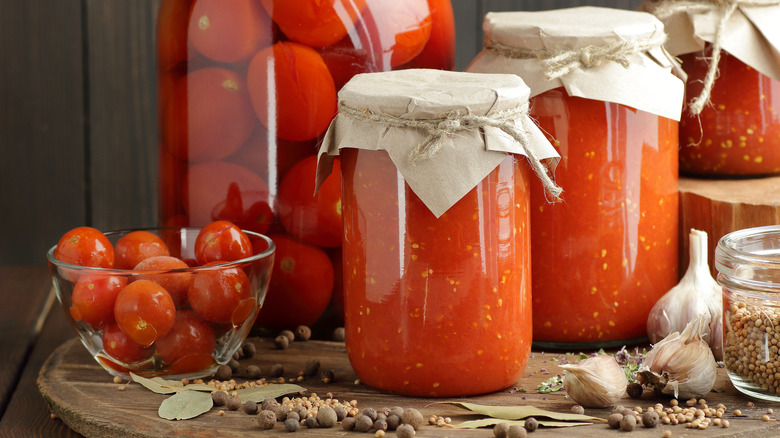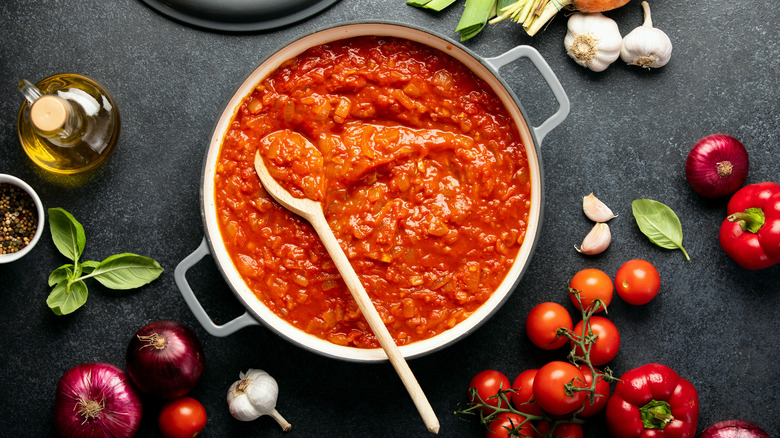When Do You Use Tomato Paste Vs. Tomato Sauce?
Sweet, tangy, acidic, and juicy. These descriptors are all reminiscent of the flavors we find the excellent tomato to embody, even if they are complete opposites. Take, for instance, all the dishes you can make with fresh tomatoes that balance the sweet notes, as we see in bruschetta, a classic BLT, or mixed into a quick basil salad. Yet we can also transform this tangy freshness into a deep, savory umami flavor by cooking the tomatoes, perfect in hearty dishes like stews. Two of the most common of this cooked variety are tomato paste and tomato sauce.
The only fundamental similarity between tomato paste and tomato sauce is that they both contain tomatoes. Otherwise, these ingredients are made and used in vastly different ways. If this is still confusing, understanding the key differences between paste and sauce, as well as exactly when and how you'll want to use them, can help.
The essence of tomato
Usually available in a tube or can, tomato paste is a thick substance made from highly concentrated tomatoes. The paste is created by simmering tomatoes for several hours (which decreases the amount of water) and then filtering out any seeds and skin. At the end of this process, you're left with a smooth paste that captures an intense flavor of rich tomato. Paste is not to be confused with purée, which is usually thinner and more acidic.
The best way to use tomato paste is as a thickening agent or to add a hint of tomato taste to a recipe quickly. Since the water content inside the paste is minimal, it can easily be used to inject a tomato flavor without the hassle of adding extra water, which you get with canned tomatoes. This also saves you time on simmering or reducing recipes. Tomato paste works well in sauces, curries, stews, and soups; however, it can also be added to small dishes like dry beans. If you're wondering if tomato paste makes a good substitute for tomato sauce, we'd suggest only if there's a zombie apocalypse.
The joyful union between tomato and sauce
Unlike tomato paste, which emphasizes the tomato alone, tomato sauce is a celebration of other complementing ingredients joining with the tomato to make it sing. Within this seemingly simple sauce are hints of garlic, diced soft onions, and an herbaceous backdrop that is satisfying yet moreish. While tomato sauce can be made in a variety of ways, it is often smoother in texture than a pasta sauce (which could include meat or chunkier vegetables).
This isn't to say that tomato sauce cannot be used on pasta, as it makes a wonderful blanket for spaghetti (especially if you grate a little parmesan on top). The sauce is relatively easy to make using canned or fresh tomatoes, and it can even include a dollop of tomato paste to give it a bolder kick. If you want to double down on the umami edge, consider adding some soy sauce. As you can tell, tomato paste alone is no match for tomato sauce. Even when combined with water to reach a more sauce-like consistency, tomato paste does not unite ingredients like our glorious tomato sauce always has.


